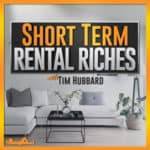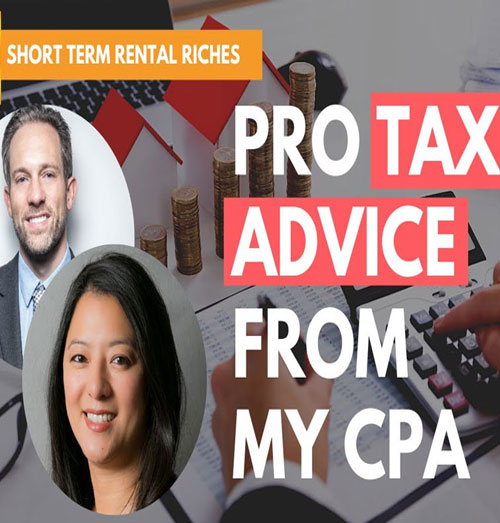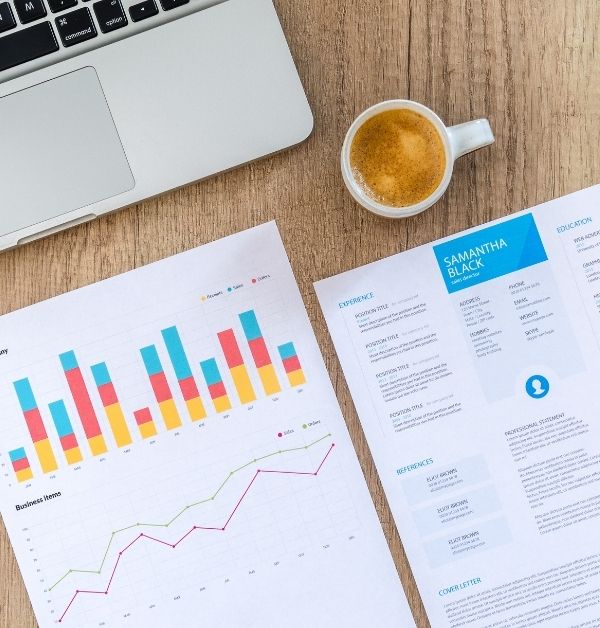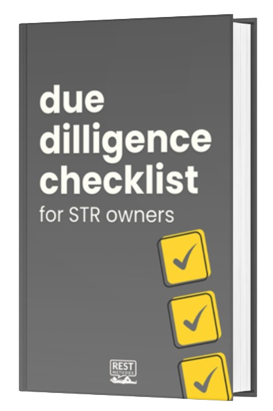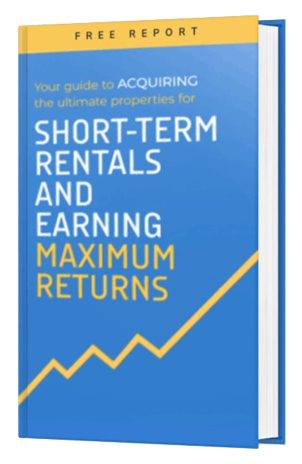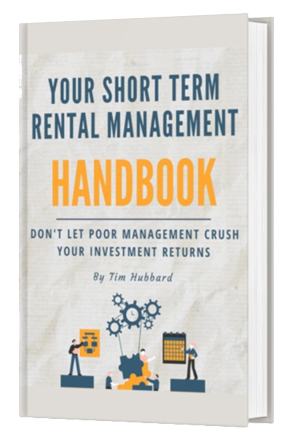How to build an Airbnb Business: The Math Behind Long-Term Discounts: How to Make Sure You’re Not Losing Money
We would all love to have our properties 100% occupied but many times a 100% occupancy rate is a clear sign that we are not charging enough money per night. What if we increased our rates 20% per night and, even with a lower occupancy, were making more money?
And then we have to think about the opposite equation. What if we have a low vacancy, does it make sense to offer a long term discount to try and increase our revenues?
I know, it’s odd to hear the word discount and increased revenues in the same sentence but with the latest travel trends showing that guests are opting for longer stays this can be a reality.
Many people give out discounts because of the fear of not getting booked but, oftentimes, caving into that fear ends up earning less profit at the end of the day. Whether you are using your pricing tools or not, you might want to stop first and think if offering discounts works out to your advantage.
I know, I know… You hear a lot of opposite opinions about whether to send special offers or not for longer stays. Luckily we have access to a lot of data that can help us figure this out to determine whether a long term rental discount is truly going to help us or not.
It’s not a guessing game. The data shows us what to do, as it almost always does in real estate. This week let’s discuss whether a long term discount makes since for your property:
- Pro & Con recap of long term reservations
- Do you know your numbers?
- Do you know your averages?
- Expenses to cover and consider
- Duplicating discounts & custom pricing
- Things to consider when calculating or giving discounts
Are you enjoying the podcast? Please subscribe, leave a rating and a review, and share it! This helps us reach others that may find the info helpful as well.
Get a copy of my 12 proven house rules to protect your property from almost every negative situation (highly recommended)
You can find all of our links here including our website, recommended resources, upcoming live events, short-term rental playbook, Instagram, and more!
Click Here to view TranscriptThere is a whole bunch of things that go into pricing our short-term rentals in the most effective way. Long-term discounts is just one other thing that we need to consider and we’re not just talking about monthly discounts but even weekly discounts. So how do we decide if it’s worth offering a discount and what would be too much of a discount?
Today, we’re going to talk about the math behind long-term, discounts to make sure that you are not leaving money on the table.
Welcome to short-term rental riches. Will discuss investing in real estate but with a specific focus on short-term rentals. Quick, Actionable items to Acquire, Manage and Scale your portfolio. I’m your host Tim Hubbard.
Welcome back to the short-term rental richest podcast for talking about long-term discounts this week. Not necessarily monthly but this could be weekly as on how we go about actually calculating them. There’s quite a few things to consider. If you missed our episode 140, we talked about the pros and cons of offering long-term stays. So, I’m going to recap just a couple quick things on that here, but if you miss that, go back and check out that episode because we’re going to talk about that in much more depth. And there are a lot of important things to consider just a cover a few of the pros of having a guest stay in your property longer, so this could be a week, two weeks. It’s three weeks, four weeks, and beyond right.
One of the things that’s very obvious is that we have less operations. So, we have less housekeeping turnover, which makes it easier for us. We also have less communication with our guest most of the time because after guest has been one of our properties for just a few days, even really just a few hours. Most of the time, they don’t have any more questions of kind of figured out the property and everything should be good. So, it’s quite a bit less work for us depending on the Ota where your property is listed. If you have long-term discounts and place, you’re also probably going to get search ranking boost switch. We all want those, right? And hopefully, it all comes down to our bottom line and by having long-term discounts we’re making more money, that’s really the only reason why we would have them in there, right? So, we are boosting the combination of our occupancy and our average daily rate turn the max Revenue possible. So, we’re going to talk about how exactly to calculate that. But before I do, I want to throw out just a couple of the cons from longer term rentals.
And when I say longer-term rentals, I mean a longer-term guest reservation, right? This could be a week, two weeks, three weeks. Whatever happens to be the longer a guest is in our property, really the less we know what’s going on in that property. And that’s one of the nice things about a short reservation is that we’re in there with our housekeeping team after the guest is checked in usually you know just a few days or a week afterwards and not too much happen unlike long-term rentals. So, I have long-term rentals as well. And I just had some tenants vacate that have been in one of my properties for about three years and they were living with their dogs. That was known, it was in their lease, but unfortunately, they didn’t take care of the place. Now, this was just a little guest house and not very large. I mean, I’d say 750 square feet, but I had a yard as well, so nice little place, but it was not in good shape. After three years, pretty much a I’ll redo and it’s looking like five to six thousand dollars potentially for new flooring or new paint or any damaged drywall for just all the miscellaneous things. A little bit of Appliance issues there. That’s a lot of money right to just shell out. Unfortunately, with our short-term rentals that’s rarely happened my team and I have managed almost 30,000 guests now and we’ve never had anything like that happened with this long-term rental. So that is one of the the benefits to short-term rentals even though it’s kind of opposite of what most people think, right? They think we’re going to have a short-term guest coming in here and they’re going to throw a party and it’s going to be a big disaster but the reality is most of the time, we don’t have these large expenses like we do with our long-term rentals. The other con to having long-term discounts is that you’re potentially giving up Future Days at a discounted rate, to what you might be able to offer, if you didn’t have that long-term discount in place.
So, let’s go ahead and And just get into how we calculate this, the first piece is we have to do some deep diving on the performance of our property, and the averages with our property, if we’re creating a long-term discount for the future, then we’re going to have to estimate our future revenue, and we’re going to have to estimate our future expenses. So, let’s go ahead and start with the revenue. The first thing we can do is if we have history with our property already but we can go back and look at what the average occupancy is. We can go back and look at what the average daily rate is. And with those two things multiplied together, we can project what our income would be. Let’s say we’re trying to determine if we want to offer a discount in December and let’s say our average occupancy last year was 70% so we rented 20 of the 30 days and our average daily rate. Just make things easy. Our average daily rate was $100 a night so we run it for 20 nights at $100 a night. It’s two thousand dollars. So, So if our future is looking like our past ID, then of course we wouldn’t want on offer a long-term discount. That’s going to go below that two-thousand-dollar Mark but there’s some other things that we need to be considering here one thing and this is a pro tip. If you’re using adynamic pricing tool, I’ve mentioned price Labs a lot on this podcast and there’s other ones out there like wheelhouse. But this has the ability for you to look at what’s called pacing. And so, pacing is basically in where we’re at today versus performance and last year. So, let’s say today, we’re in June and we’re trying to determine December’s occupancy. Let’s say, right now, our occupancies 10% as we are in here in June, but last year in June, our occupancy, and December was 30%. Well, that would mean that we’re pacing behind. Hopefully this is making sense but it’s basically a comparison of our performance at a certain date and time in the past.
So that is a pro tip Google that it checks out some other YouTube videos to learn a little bit more on pacing. I want to give you just the basic calculations today to help you better determine what the best thing for you to be doing with in regards your long-term discount is, so we need to know our average occupancy. We need to know our average daily rate. Now, there are people that dedicate their careers to this Revenue managers. For example, this is all they do they calculate Trends and seasonality and send last minutes days and all these types of things. But one thing that they often leave out our expenses and us as investors as owners we have to calculate our expenses, right? Because at the end of the day it’s our net income. That makes the big difference. It doesn’t matter if we earned twice as much of our expenses were twice as much at the same time, so we need to make sure that we’re calculating our expenses in this change based on the length of our reservation. So, one easy thing we can do. Do just for starters is exclude are fixed expenses. So, these are things like our mortgage payment, our insurance, our property tax, any fixed monthly payment, that you have, or annual payment that you have is not going to affect, whether you should be offering a long-term discount or not, because it has no effect there. What we do need to include the variable costs. And so, these are things like utilities, these are things like housekeeping. So, the longer your reservation, the less your house keeping cost, we also have things like transient occupancy tax and I’ll teach a bit more on that here in a second. But most reservations under 30 days, you have to pay a local transient occupancy tax and this can really add up. So, these are all variable expenses based on the length of your reservation. And so, in order to estimate a future discount, we need to know the averages of these and so we can go back in time, look at prior months and pull out the average. Utility expense, so maybe the utility expense is $500. We do want to take into account seasonality, so maybe your utility bills, much higher in the winter than it is in the summer because you have really cold Winters. So, you want to make sure that your accurately as possible, estimating your average variable expenses, with our average expected income in the future and our average variable expenses, we can subtract the two. Let’s just say our Today income was four thousand dollars and our expected expenses are $1000 that leaves three thousand dollars left over. So based off that number we wouldn’t want to offer a long-term discount, a monthly long-term discount in this example. That brings our estimated Revenue below 3000 dollars because the likelihood of us being able to rent for that three thousand dollars is already there, Right? So, when might we want to offer long-term discount? Well, let’s say December is all six months away from now. And so, our pricing is higher because we have plenty of time to get bookings still. So, let’s say right now on the platforms where we have our properties listed, let’s say it’s listed for nine thousand dollars a month right now, and you could easily add in a long-term discount future long-term discount for 25%, right? Because it’s still going to bring down your price to a point that’s higher than your expected Revenue. So that’s all we’re really trying to do here. We just to have an accurate picture of our average expenses and an accurate picture of our estimated revenue and make sure that we’re not discounting below that, that’s about it.
Now, you’re always going to get guess asking for additional discounts. I think it’s best to always ask them first. So, if they say, hey, do you offer a long-term discount? If I go ahead and book your December for the whole month? Well, instead of saying sure will offer 25%. It’s better to reach out to them and say What did you have in mind? Or what do you think is fair? And then you can work with them around that a little bit. But most of the time, if we’re using a dynamic pricing tool, it already has a lot of that kind of factored in, but this is just the bottom-line numbers to help you make a decision to know whether you can offer these discounts or not. Now, the one thing that you need to add back in there, let’s say that three thousand dollars. Estimated income has a transient occupancy tax on it or let’s say it was a 28 night stay just to make things easy and you’re still making three thousand dollars a month but you’re paying 10% to the city for a transient occupancy tax versus maybe that reservation changes to a thirty-one-night stay and now you have no transient occupancy tax because your city doesn’t charge on stays over 30 nights. Well, you really need to consider that in, right? Because that’s a 10% difference. So hopefully that made sense there and hopefully you’re using a dynamic pricing tool. So, you’re far out pricing is already adjusted for now. You might be wondering what’s happening with Airbnb’s weekly and monthly discount. If you’re already using in Dynamic pricing tool like price Labs or wheelhouse? Remember if you’re already using one of those tools and you apply Airbnb’s discount a weekly or a monthly discount, that’s going to add an additional discount on top of whatever you have set up in your pricing software. So, make sure that you’re not setting up duplicates because we learned that lesson the hard way quite a while ago. Remember, this can also be a really good strategy setting long-term discounts far out in the future, or during times where your rental is in a low part of the Season where the occupancies lower and it makes sense to bring in a guest for a longer-term reservation, even with a discount, of course you’re going to check your expenses. You’re going to check your average income during that time frame and make sure that That that’s all in line with whatever price you happen to be charging.
Remember if your guests asked you for an additional discount, make sure to take all these things into account and go ahead and ask them first what they think is fair and knowing your expenses, knowing your income, you will be able to make a good decision. I hope that helped there’s a lot that goes into pricing and so we could talk for a long, long time on this, like I said, there are people that dedicate their careers to this, but hopefully, it gave you the foundation. Able to calculate whether or not you should be offering long-term stay discounts. Till next time, I hope you have a wonderful day.
Want to get on the fast track to Financial Freedom through short-term rentals what all starts with the properties you acquire. But you want to make sure that you acquired the right properties. I want to give you my e-book that will show you how to do just that. There is no charge, It’s my gift to you for being one of our subscribers. Just go to restmethods.com. That’s REST methods.com
RELATED PODCAST EPISODES
